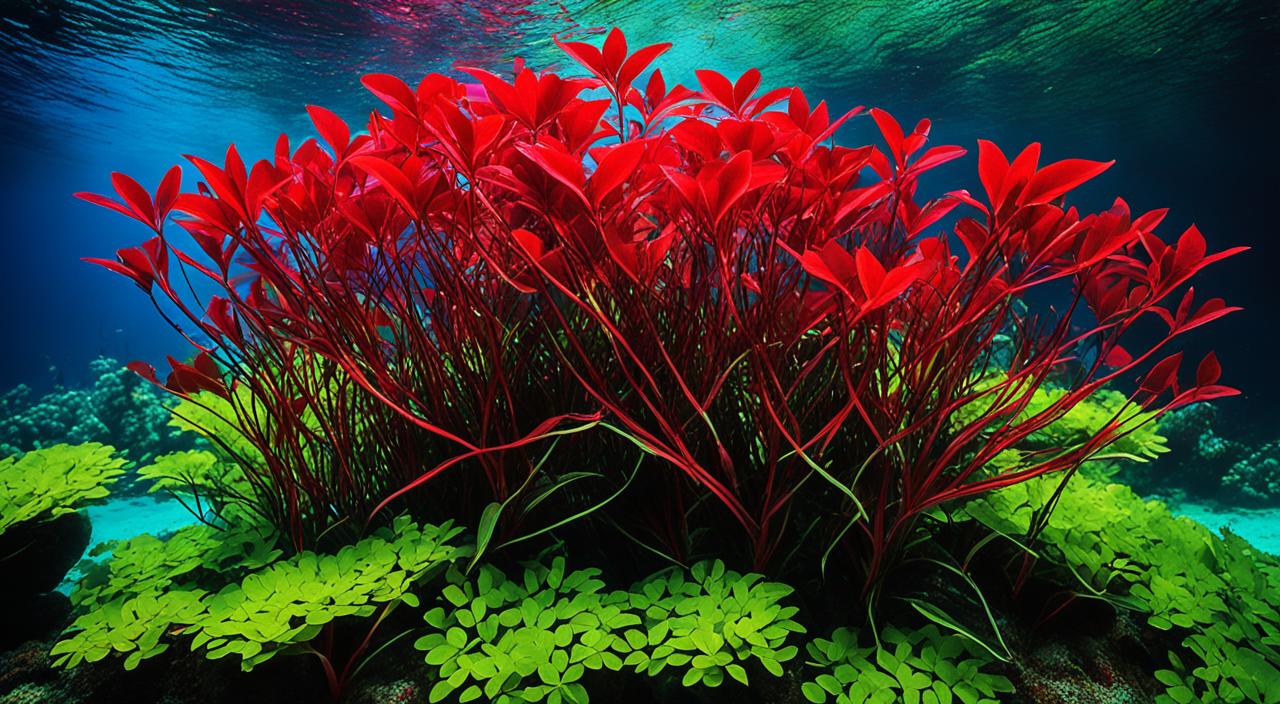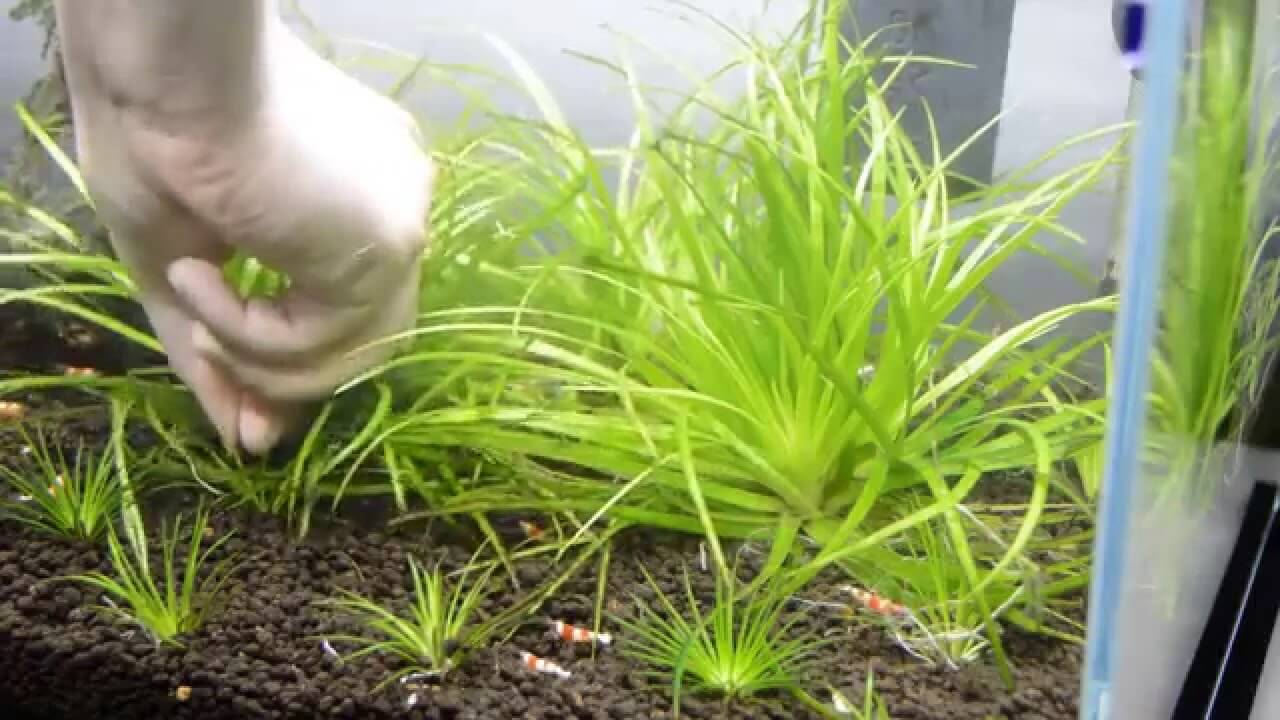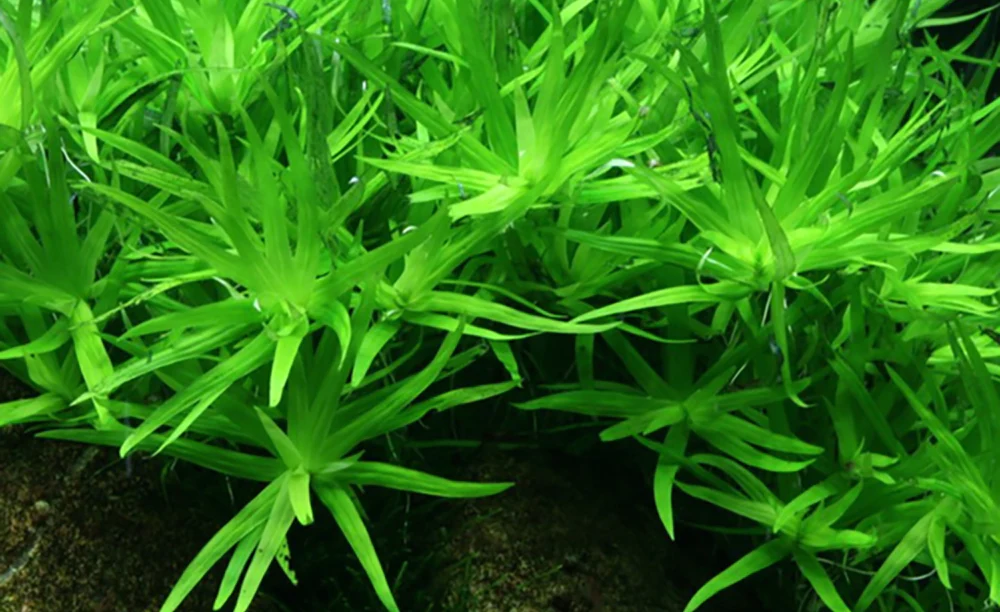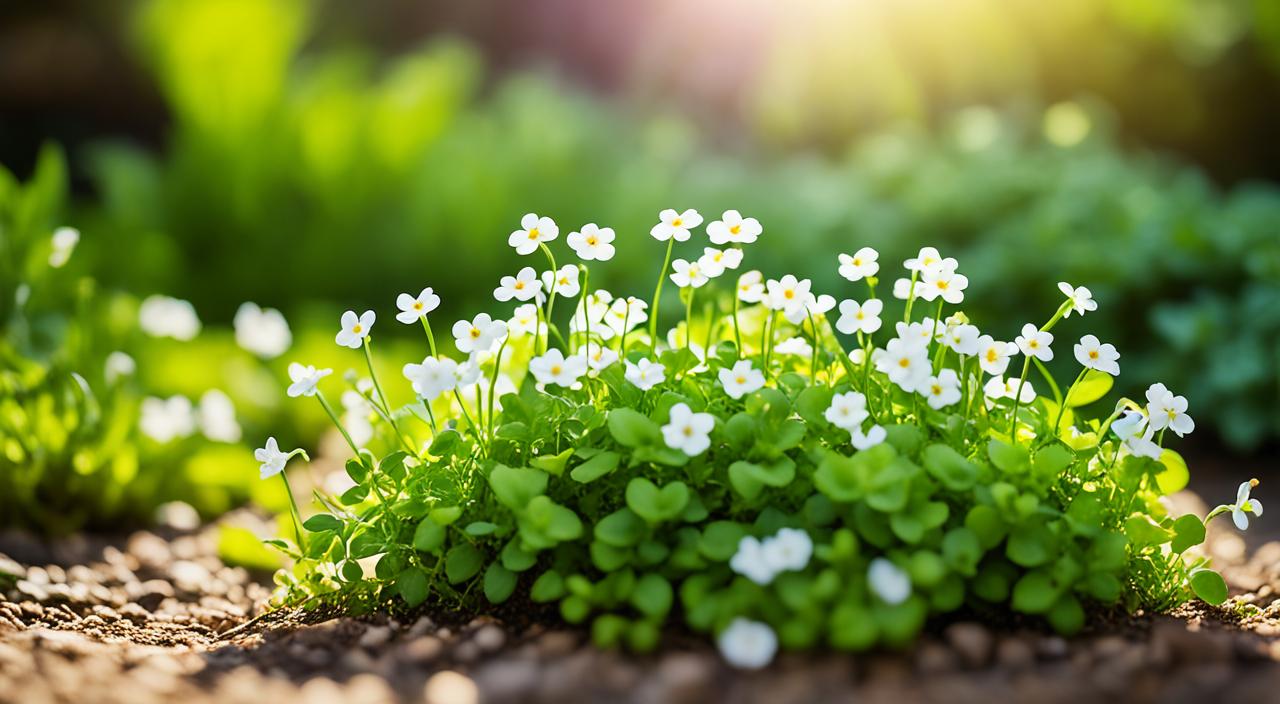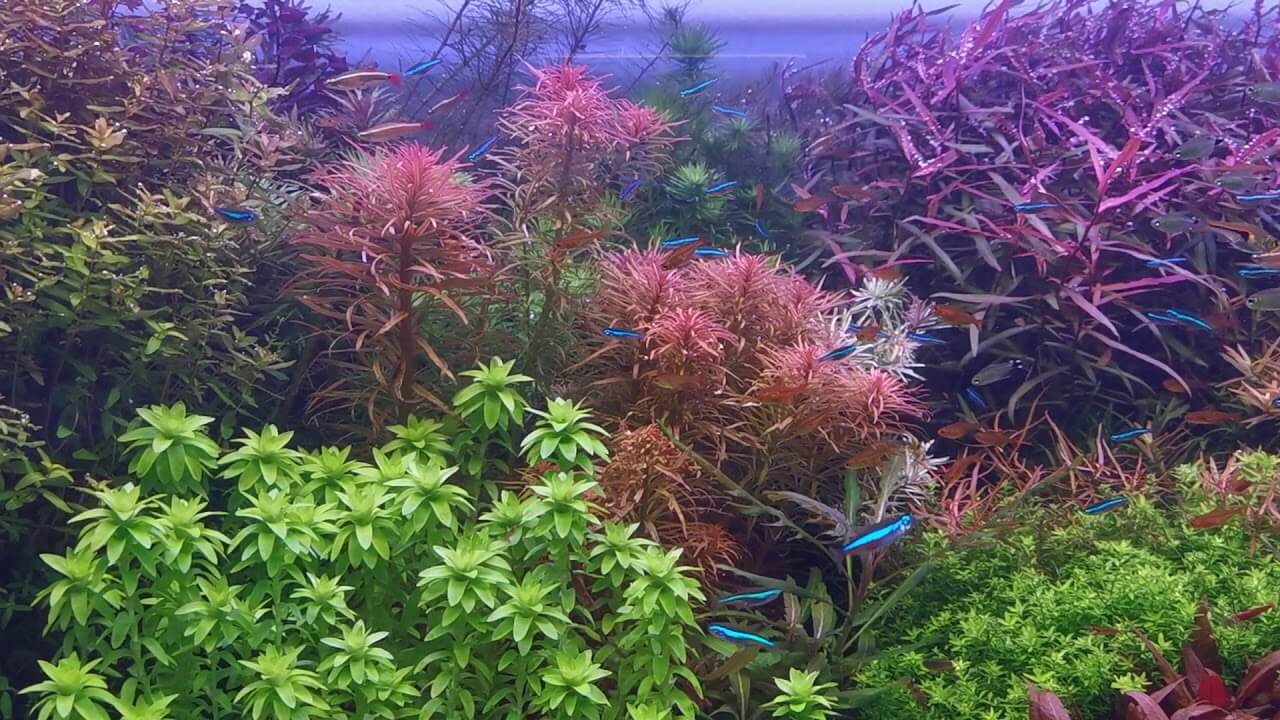Greetings, fellow aquascaping enthusiasts! Today, I’m excited to share all the secrets to caring for Ludwigia glandulosa, also known as red aquarium or highlight aquatic plants. With its vibrant red colouration and unique morphology, Ludwigia glandulosa can instantly transform any aquarium into a captivating underwater paradise.
In this comprehensive guide, I will walk you through everything you need to know about Ludwigia glandulosa, from its origins and habitat to its placement and lighting requirements. We’ll explore the ideal tank mates, feeding and fertilization techniques, CO2 supplementation, care tips, aquarium maintenance, and health and disease considerations. Whether you’re a seasoned aquarist or just starting, this guide will equip you with the knowledge to successfully care for Ludwigia glandulosa in your aquascape.
Key Takeaways:
- Ludwigia glandulosa, also known as red aquarium or highlight aquatic plants, adds a stunning visual appeal to any aquascape.
- It is native to the southeast United States and thrives in warm temperatures and ample light.
- The plant requires a pH of about 6-7.5 and can be submerged or emersed.
- High lighting, nutrient-rich substrate, and CO2 supplementation are necessary for optimal growth and colouration.
- Good tank mates for Ludwigia glandulosa include small, peaceful fish, while aggressive or fin-nipping fish should be avoided.
Brief Overview Of Ludwigia glandulosa
Ludwigia glandulosa, also known as the cylindric fruit primrose-willow, is an amphibious plant native to the southeast United States. It can grow either partially or fully submerged in water. Ludwigia glandulosa is known for its slow growth and requires carbon dioxide (CO2) supplementation to thrive. Insufficient lighting can cause the leaves to turn greener. The plant can be found in wetland areas and roadside ditches in the southern states of North America. It is a threatened species in Indiana and endangered in Maryland.
Ludwigia Glandulosa Information Table:
| Row Names | Descriptions |
|---|---|
| 1. Scientific Name: | Ludwigia glandulosa |
| 2. Common Names: | Peruvian Ludwigia, Red Star Ludwigia |
| 3. Origin: | North and Central America |
| 4. Height: | Up to 20 inches (50 cm) |
| 5. Growth Rate: | Moderate |
| 6. Colour: | Leaves are deep red to purple, with green tops |
| 7. Aquarium Placement: | Midground to Background |
| 8. Water Type: | Freshwater |
| 9. pH: | 5.0 – 7.5 |
| 10. Care Level: | Moderate to High |
| 11. Light Requirements: | High; 50-70 PAR (Photosynthetically Active Radiation), 5000-7000 Kelvin, 30-50 LUX |
| 12. CO2 Requirements: | Recommended for optimal growth and coloration |
| 13. Temperature: | 20-28°C (68-82°F) |
| 14. Flow Rate: | Moderate to High |
| 15. Propagation: | Cuttings |
| 16. Feed Type: | Root tabs and liquid fertilizers recommended |
Expanded Light Requirements:
For Ludwigia glandulosa, achieving vibrant colouration and healthy growth requires high-lighting conditions. The plant thrives under a PAR (Photosynthetically Active Radiation) value of 50-70, considered high light intensity in the aquarium hobby. This light level encourages the red and purple hues for which Ludwigia glandulosa is celebrated.
The ideal Kelvin range for the lighting should be between 5000 and 7000. This spectrum supports photosynthesis efficiently while enhancing the natural colours of the plant. Lights closer to 5000 Kelvin will emphasize the green hues in plants, while those closer to 7000 Kelvin enhance reds and purples, making them preferable for Ludwigia glandulosa.
LUX, or the measure of light intensity as perceived by the human eye, should be 30-50 LUX for Ludwigia glandulosa. However, it’s important to note that LUX is not as relevant to plant growth as PAR, which explicitly measures the wavelengths used by plants for photosynthesis.
| Growth Type | Native Region | Lighting Requirement | CO2 Supplementation |
|---|---|---|---|
| Amphibious | Southeast United States | High light | Required for optimal growth |
Origins And Habitat
Ludwigia glandulosa is native to the southeast United States and can be found in wetland areas and roadside ditches throughout most southern states. It thrives in warm temperatures and requires ample light to survive. The perennial plant can grow to a maximum height of about 40 cm. Ludwigia glandulosa benefits from the presence of phosphates and nitrates in the water. It is a threatened species in Indiana and endangered in Maryland, requiring special precautions to protect it from invasive species and human activities.
Morphological Characteristics
Ludwigia glandulosa is a beautiful perennial herb/forb plant that can add a touch of vibrant colour to any aquascape. It grows up to a foot and six inches in height, making it an excellent choice for small and large aquariums. The plant features oval, pointed leaves that grow in opposite pairs along the stem. With adequate lighting, these leaves can display a stunning range of colours, from green and gold to orange and red.
Ludwigia glandulosa is a versatile plant that can be grown submerged or emersed, depending on your desired aesthetic. It can create an eye-catching focal point with its unique foliage when placed in an aquarium. The plant prefers a slightly acidic to neutral pH level, ranging from 6 to 7.5, to thrive and flourish.
Propagation of Ludwigia glandulosa can be easily accomplished by taking cuttings from the main stem. These cuttings can then be replanted in the substrate, enabling new plants to grow and expand your aquascape.
Placement And Lighting
Ludwigia glandulosa is a versatile aquatic plant that can be used as both a mid-ground and background plant in aquariums. Planting in bunches of 10-12 stems creates a visually appealing focal point in the aquascape.
High lighting and nutrient levels are essential to achieve the vibrant and desirable red colours of Ludwigia glandulosa. The plant requires intense light to maintain its vibrant red hue. Additionally, supplementing the aquarium water with iron can enhance the red tones of the plant, making it even more visually striking.
CO2 injection is highly recommended for optimal growth and colouration of Ludwigia glandulosa. A steady supply of CO2 encourages healthy and robust growth, leading to more luscious foliage and brighter colours. CO2 supplementation can be achieved using various systems, such as pressurized CO2 setups or do-it-yourself (DIY) CO2 fermentation.
Ludwigia glandulosa can be grown either fully submerged or partially emerged. When fully submerged, the plant thrives underwater, with its vibrant red colours against green foliage. On the other hand, partially emersed Ludwigia glandulosa can produce delicate yellow flowers, adding an extra touch of beauty to the aquarium.
What Are Good Tank Mates?
Ludwigia glandulosa can thrive alongside various fish species and aquatic plants in your aquascape. When selecting tank mates for Ludwigia glandulosa, it is essential to consider their compatibility and impact on the plant’s well-being. Choosing suitable tank mates allows you to create a harmonious and visually appealing aquarium environment.
Good Tank Mates
The following fish species are known to be good tank mates for Ludwigia glandulosa:
- Tetras
- Rasboras
- Livebearers
These small and peaceful fish species share similar water parameters and can coexist peacefully with Ludwigia glandulosa. Their active swimming patterns and vibrant colours can provide a pleasing contrast to the plant’s rich red hues, enhancing the overall visual appeal of your aquascape.
Fish Species To Avoid
While many fish species can coexist with Ludwigia glandulosa, there are a few to avoid due to their potential to uproot or damage the plant. It is best to steer clear of the following fish species:
- Cichlids
- Large bottom-dwelling fish
Cichlids are known for their digging behaviour, which can uproot the delicate roots of Ludwigia glandulosa. Large bottom-dwelling fish, such as plecos, may unintentionally damage the plant while searching for food. Additionally, aggressive fish or those prone to fin-nipping should be avoided to prevent any harm to the plant’s foliage.
To maintain the health and beauty of Ludwigia glandulosa in your aquascape, it is essential to consider these compatible and incompatible fish species when planning your aquarium community.
Feeding (Fertilization)
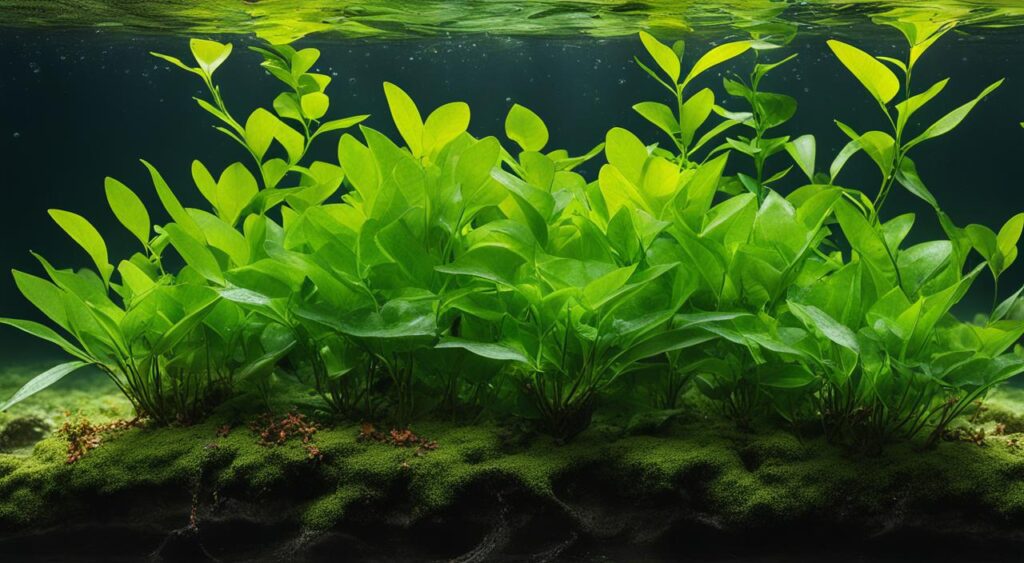
Ludwigia glandulosa, like many other aquatic plants, requires regular fertilization to ensure healthy growth and vibrant colouration. By providing the plant with the necessary nutrients, you can help it thrive in your aquarium. A balanced plant fertilizer that contains essential elements such as nitrogen, phosphorus, and potassium is recommended for Ludwigia glandulosa. These nutrients are crucial for its overall health and vitality.
Regarding the frequency of fertilization, it depends on your specific fertiliser. As a general guideline, feeding Ludwigia glandulosa once or twice weekly is usually sufficient. However, it is essential to follow the instructions provided by the fertilizer manufacturer and adjust the dosage according to the size of your aquarium. Over-fertilizing can lead to algae problems and other imbalances within the tank, so finding the right balance is crucial.
In addition to regular fertilization, performing regular water changes can help maintain optimal nutrient levels for Ludwigia glandulosa. Water changes help remove accumulated waste or excess nutrients that may harm the plant’s health. Aim for consistent and balanced nutrient levels to support the growth and colouration of Ludwigia glandulosa in your aquarium.
Image: Ludwigia glandulosa being fertilized to promote growth and colouration.
CO2 Injection
Ludwigia glandulosa benefits from CO2 supplementation, which promotes its growth and colouration. Various types of CO2 injection systems are available for aquarium plants, including pressurized CO2 systems and DIY CO2 setups. Pressurized CO2 systems provide a consistent and controllable supply of CO2, while DIY CO2 setups utilize yeast fermentation to produce CO2. The type of CO2 injection system to choose depends on the size of your aquarium, your budget, and your level of experience with CO2 supplementation. It’s essential to monitor the CO2 levels to prevent overdosing, which can harm the fish and other aquatic organisms in the tank.
Care
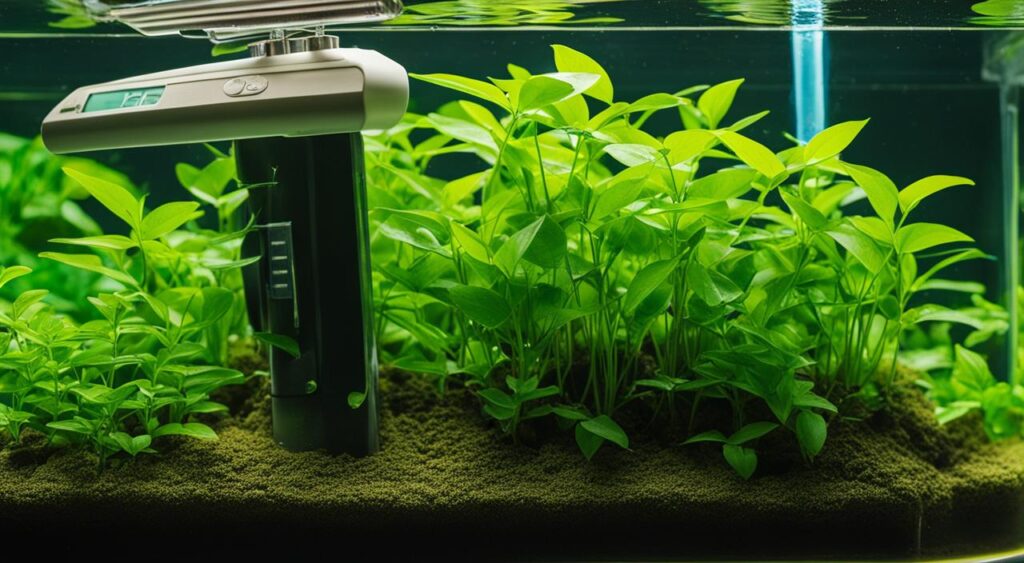
Proper care is essential for the health and growth of Ludwigia glandulosa. To ensure the well-being of this beautiful aquatic plant, it is crucial to consider several factors:
Planted Tank Parameters
To create an ideal environment for Ludwigia glandulosa, providing a nutrient-rich substrate that promotes root development and supports plant growth is recommended. Sufficient lighting is also crucial, as Ludwigia glandulosa requires high light intensity to maintain its vibrant red colouration. Additionally, CO2 supplementation is highly beneficial for optimal growth and enhancing the plant’s colouration.
Water Quality
Ludwigia glandulosa thrives in good water quality. Maintaining stable water temperature within the range of 72-82°F (22-28°C) and pH levels between 6 and 7.5 is crucial. Ammonia and nitrate levels should be low to prevent stress and promote healthy growth. Regular monitoring of water parameters is essential to ensure the well-being of Ludwigia glandulosa.
Filtration
Proper filtration is crucial for maintaining water clarity and removing pollutants that can affect the health of Ludwigia glandulosa. A reliable filtration system will help remove excess waste, debris, and harmful substances, ensuring a clean and healthy environment for the plant.
Flow
The water flow in the aquarium should be moderate to ensure proper distribution of nutrients and prevent stagnant areas. A gentle to moderate flow will help deliver essential nutrients to Ludwigia glandulosa and avoid the accumulation of debris. It is crucial to consider the placement of the plant in the water flow to ensure optimal growth.
To provide the best care for Ludwigia glandulosa, it is essential to maintain planted tank parameters, ensure good water quality, implement proper filtration, and regulate water flow. Regularly monitoring these factors will contribute to this stunning aquatic plant’s overall health and vitality.
Aquarium Maintenance
Testing Water Conditions
Regular testing of water conditions is essential for maintaining a healthy environment for Ludwigia glandulosa. Monitoring temperature, pH levels, ammonia, nitrite, and nitrate levels is essential. Testing kits designed for aquariums can help accurately measure these parameters and ensure they are within the appropriate range for Ludwigia glandulosa’s well-being.
How To Set Up Your Aquarium Tank
Proper setup of your aquarium tank is crucial for the successful growth of Ludwigia glandulosa. When setting up the tank, consider providing a suitable substrate, such as nutrient-rich aquarium soil, which will provide essential nutrients for the plants. Additionally, ensure proper lighting with a spectrum ideal for aquatic plants, and consider implementing CO2 supplementation to promote healthy growth and vibrant colouration in Ludwigia glandulosa. Proper water circulation and filtration are also essential to maintain optimal water quality and prevent the buildup of harmful substances.
Propagation Methods
Propagating Ludwigia glandulosa is an exciting process that allows you to expand your plant collection. One effective propagation method is through stem cuttings. Carefully cut a healthy stem from the main plant, including several leaves. Remove any lower leaves, and then plant the cutting into the substrate of your aquarium. With the right conditions, the cutting will develop roots and grow into a new Ludwigia glandulosa plant.
Health And Disease
Monitoring Ludwigia glandulosa’s health is vital for its overall well-being. As an aquarist, it is crucial to be aware of the signs of good health and identify any signs of poor health in this beautiful aquatic plant. By paying attention to its appearance and growth, you can catch any potential health issues early on and take appropriate action to ensure the plant thrives.
Signs Of Good Health
Signs of a healthy Ludwigia glandulosa include vibrant red colouration, a characteristic feature of this species. The leaves should be lush and undamaged with a robust and vibrant colour. The plant should also exhibit steady growth, with new leaves continually sprouting and reaching towards the light. A healthy Ludwigia glandulosa will significantly enhance the visual appeal of your aquascape.
Signs Of Poor Health
If a Ludwigia glandulosa is unhealthy, you may notice faded colouration in the leaves. Instead of vibrant red, the leaves may appear dull or even greenish. Wilting or shedding leaves are also signs of poor health. Stunted growth, where new leaves fail to develop, or existing leaves do not reach their full size, may also indicate a problem. It is essential to promptly address any signs of poor health to prevent further deterioration.
Common Health Issues And Treatment
Several factors can contribute to the poor health of Ludwigia glandulosa, including nutrient deficiencies, improper water parameters, and pests or diseases. Nutrient deficiencies can be corrected by ensuring proper fertilization. Adjusting water parameters, such as pH and temperature, to be within the plant’s preferred range can also help improve its health. Additionally, pests such as snails or algae can negatively impact Ludwigia glandulosa. Regular maintenance practices, including quarantine and physical removal of pests, can help control their population. If necessary, targeted treatments specific to the health issue may be required.
Plant Pests
Ludwigia glandulosa can be susceptible to various plant pests, and it’s essential to keep an eye out for them. Common pests that can affect Ludwigia glandulosa include snails and algae. Snails can damage the leaves and consume vital nutrients, while algae can outcompete the plant for light and nutrients. Preventative measures such as quarantine and regularly inspecting plants can help control pests. If an infestation occurs, manual removal or appropriate treatments can help eliminate the pests and restore the health of Ludwigia glandulosa.
| Problem | Signs | Treatment |
|---|---|---|
| Nutrient Deficiency | Faded or yellowed leaves, stunted growth | Proper fertilization, adjusting water parameters |
| Snail Infestation | Visible snails on leaves, chewed or damaged leaves | Manual removal, introducing snail-eating fish or invertebrates |
| Algae Overgrowth | Green or brown coatings on leaves, reduced growth | Improving water circulation, reducing nutrient imbalances, and introducing algae-eating fish |
Summary
Ludwigia glandulosa is a stunning red aquatic plant that can transform any aquascape into a visual masterpiece. Its vibrant colouration and unique morphology make it a popular choice among aquascaping enthusiasts worldwide.
Proper care is essential to ensure the healthy growth and vibrant colouration of Ludwigia glandulosa. This includes providing it with suitable lighting, CO2 supplementation, and balanced fertilization. Adequate lighting and CO2 levels are crucial for its growth, while balanced fertilization offers the nutrients for its vibrant red hues.
When selecting tank mates for Ludwigia glandulosa, it is essential to choose species that will not uproot or damage the plant. Small peaceful fish such as tetras and rasboras are ideal companions, as they thrive in similar water parameters and enhance the beauty of the plant. Avoid aggressive or fin-nipping fish that can harm the delicate leaves of Ludwigia glandulosa.
Maintaining optimal water parameters is crucial for the well-being of Ludwigia glandulosa. Regular monitoring, maintenance, and promptly addressing health issues will help keep the plant thriving in your aquarium. Whether you are an experienced aquarist or a beginner, Ludwigia glandulosa offers a beautiful and rewarding addition to your aquascape, bringing vibrant colours and life to your underwater world.
FAQ
What are good tank mates for Ludwigia glandulosa?
Good tank mates for Ludwigia glandulosa include small peaceful fish such as tetras, rasboras, and livebearers. These fish thrive in similar water parameters and can complement the vibrant colors of Ludwigia glandulosa.
Which fish species should I avoid when keeping Ludwigia glandulosa?
It’s important to avoid fish species that may uproot or damage the plant, such as cichlids or large bottom-dwelling fish. Additionally, aggressive or fin-nipping fish should be avoided to prevent damage to the delicate leaves of Ludwigia glandulosa.
How much and how often should I feed Ludwigia glandulosa?
Ludwigia glandulosa benefits from regular fertilization to support its growth and coloration. A balanced plant fertilizer should be used, providing essential nutrients such as nitrogen, phosphorus, and potassium. The frequency of fertilization depends on the specific fertilizer used, but a general guideline is to feed the plant once or twice a week.
What types of CO2 injection systems are recommended for Ludwigia glandulosa?
There are various types of CO2 injection systems available for aquarium plants, including pressurized CO2 systems and DIY CO2 setups. Pressurized CO2 systems provide a consistent and controllable supply of CO2, while DIY CO2 setups utilize yeast fermentation to produce CO2. The type of CO2 injection system to choose depends on the size of your aquarium, your budget, and your level of experience with CO2 supplementation.
What are the care requirements for Ludwigia glandulosa?
Ludwigia glandulosa requires a planted tank with suitable parameters, including a nutrient-rich substrate, sufficient lighting, and CO2 supplementation. Good water quality with stable temperature, pH levels, and low ammonia and nitrate levels is crucial. Proper filtration and moderate water flow are important for nutrient distribution. Regular monitoring of water parameters and maintenance routines will help ensure the well-being of Ludwigia glandulosa.
How should I maintain my aquarium tank with Ludwigia glandulosa?
Proper aquarium maintenance for Ludwigia glandulosa includes regular testing of water conditions, such as temperature, pH levels, ammonia, nitrite, and nitrate levels. Stable water parameters and regular water changes are important to prevent nutrient imbalances and algae growth. When setting up the aquarium tank, provide a suitable substrate, proper lighting, CO2 supplementation, and adequate water circulation. Propagation of Ludwigia glandulosa can be achieved through stem cuttings.
What are the signs of good health in Ludwigia glandulosa?
Signs of good health in Ludwigia glandulosa include vibrant red coloration, healthy and undamaged leaves, and steady growth.
What are the signs of poor health in Ludwigia glandulosa?
Signs of poor health in Ludwigia glandulosa may include faded coloration, wilting or shedding leaves, and stunted growth.
What are common health issues that can affect Ludwigia glandulosa and how can they be treated?
Common health issues in Ludwigia glandulosa can be caused by nutrient deficiencies, improper water parameters, or pests and diseases. Nutrient deficiency can be addressed through proper fertilization or adjusting water parameters. Pests, such as snails or algae, can be controlled through quarantine and regular maintenance practices. If necessary, targeted treatments may be required to address specific health issues.
What are some plant pests that can affect Ludwigia glandulosa?
Plant pests that can affect Ludwigia glandulosa include snails and algae. These pests can be controlled through quarantine and regular maintenance practices.
What is a brief summary of Ludwigia glandulosa?
Ludwigia glandulosa is a stunning red aquatic plant that can add visual appeal to any aquascape. It requires proper care, including suitable lighting, CO2 supplementation, and balanced fertilization, to thrive and display vibrant colors. Choosing compatible tank mates and maintaining optimal water parameters are important for its well-being. Regular monitoring, maintenance, and addressing any health issues promptly are key to keeping Ludwigia glandulosa thriving in your aquarium.

